NGC4236 Spiral Galaxy
Click image for full size version
April 20, 2014 – Astronomy Magazine Picture of the Day April 21, 2014
NGC4236 is a barred spiral galaxy in Draco, the Dragon. It is large (length is more than 2/3 the moon’s width) but has a very low surface brightness, meaning it is barely brighter than the background glow of the sky and quite difficult to image (tekkies – mean surface brightness is 24.3 mag/arcec2; outer arms are much fainter). This image used 20 hours of light: 4 hours each through red, green and blue filters and 8 hours through a clear filter. That makes it my longest exposure for any image to date. This was necessary to tease detail from this big but elusive object, which is not often imaged. NGC4236 is part of the M81 group (I have imaged M81 and M82). It lies about 12 million light years away, There are many other galaxies in the field, including several in a swarm above the left end of NGC4236.
Tekkies:
SBIG STL-11000M camera, Baader LRGB filters, 10″ f/6.8 ASA astrograph, Paramount MX. Guided with STL-11000’s internal guider. Acquisition, guiding, calibration, and integration all done using Maxim-DL. Image registration and all processing in PixInsight. Shot from my SkyShed in Guelph, Ontario. Thin crescent moon. Average transparency and seeing throughout.16x15m R, G and B; 32x15m L, all unbinned frames (total=20 hr).The R, G, B and L files produced in MaximDL were each background-corrected with DynamicBackgroundExtraction, registered and cropped to remove edge artifacts. R, G and B were combined into an RGB image and colour calibration applied and stretched using MaskedStretch. The L image was processed with deconvolution (using a custom PSF made from DynamicPSF command) and stretched with MaskedStretch. TGV noise reduction was applied to remove fine scale noise. Luminance was extracted from the colour, matched to the L image with LinearFit, and then added back into the colour using Channel Combine in the Lab space. Further noise reduction was applied to the background and UnsharpMask applied to the galaxy. SCNR was used to reduce green noise in galaxy, and contrast and saturation were adjusted using Curves. Image scale is about 1.1 arc sec per pixel.

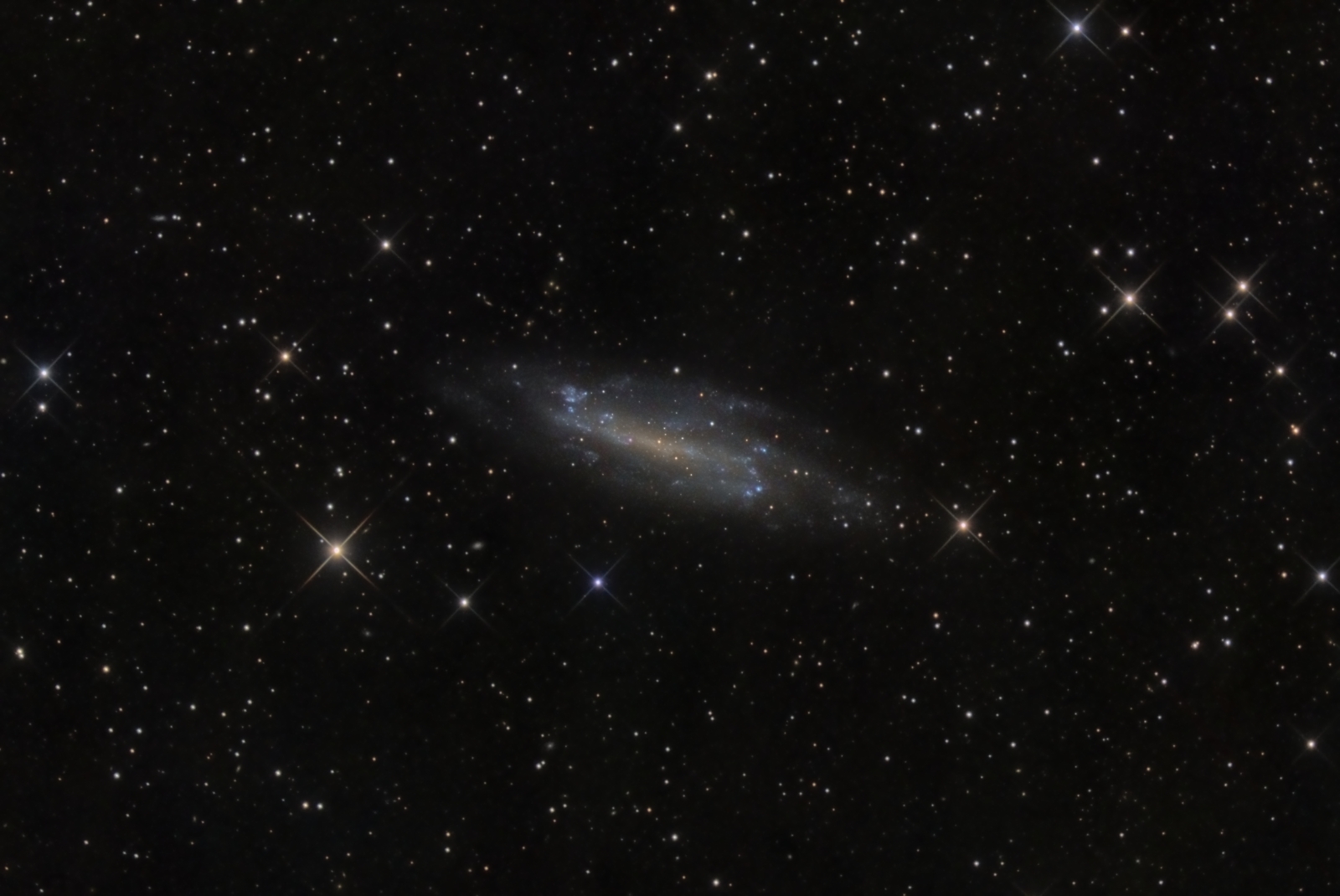

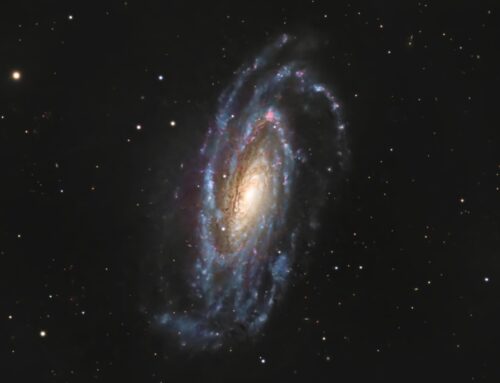
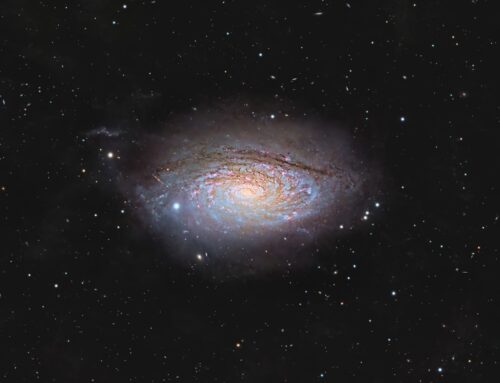
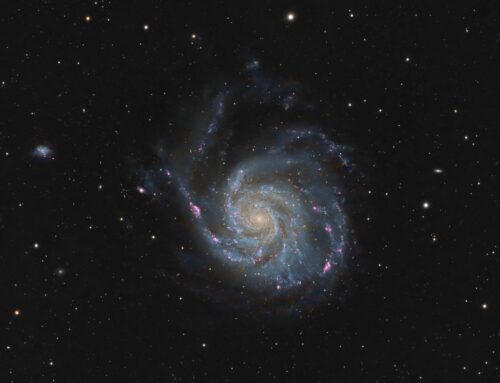
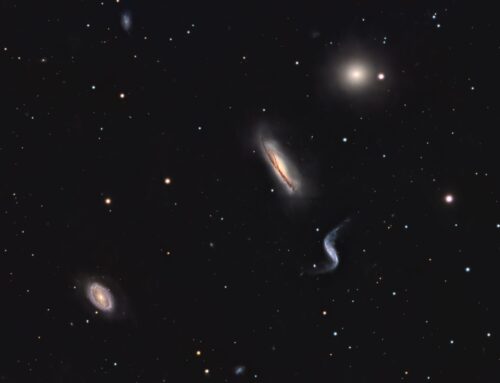
Leave A Comment